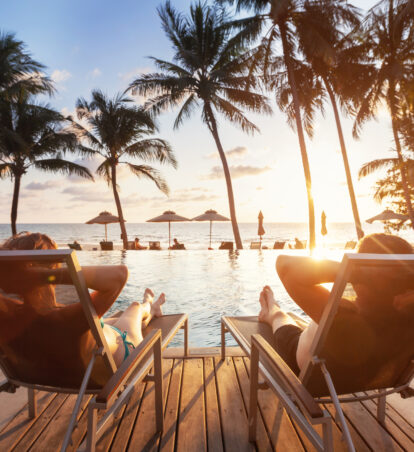Hotel & Digital Marketing Analytics | Water Business Analytics
Psychology experts have estimated that having something like a communal water cooler will increase workplace productivity by as much as 10-15%. Experts at GCommerce will tell you it’s a huge pain when the communal water cooler stops working. Which is exactly what happened last week at our offices in Park City. It took just over 2 days for it to be fixed and in that time we used 2.5-gallon jugs as replacements. Our Reporting and Analytics specialists are always looking for new ways to measure data and we saw this as a great opportunity for some water cooler insights. While this information probably does not benefit our business in any way, we thought it would be interesting to measure out our drinking water usage in an exercise very similar to building insights for hotel websites. Here, we’d like to share our results with you:
We bought 2 different types of water, Spring Water and Drinking Water, both from Mount Olympus. We contacted the wonderful people at Mount Olympus Water for comment, they explained: “the difference between the 2 is that Spring Water is from a locally sourced spring with a natural mixture of minerals that give the water a pH balance between 6.5 and 8. Drinking Water is purified from a locally sourced tap with natural minerals added that give the water a pH of exactly 6.” The representative that commented for us said that he personally preferred the Drinking Water to the Mineral Water. I was unable to determine any difference in a blind taste test.
Table 1

As Table 1 illustrates, GCommerce employees also prefer the Drinking Water to the Spring Water, nearly 2:1. A full Drinking Water jug unopened has about 7.5 inches of water in it. The Drinking Water jug that was not fully consumed had about .4 of an inch of water left in it. Therefore, we could estimate about .2 of a gallon of water were left, or 2.3 gallons consumed. With 1 Spring Water and 1 Drinking Water empty, that gave a total consumption of 4.8 gallons of Drinking Water and 2.5 of Spring Water.
Considering this is only about half the water the office consumed, as only 1 water cooler went out, we could double these numbers and make predictions about our office drinking habits. Assuming there are 5 days in a normal workweek, we will drink about 29 gallons of water, with 22 workdays in an average month, we will drink close to 129 gallons and with 262 workdays in an average year, we will drink over 1,530 gallons of water.
Table 2

If that sounds like a lot of water, it sort of is. Each gallon of water is enough to take up 7.5 cubic feet of water in a swimming pool. Which means we could completely fill a pool of over 204 cubic feet with the amount of water we drink each year. Although, as an Olympic sized swimming pool is over 88,000 cubic feet, it would take us over 441 years to drink enough water to fill a pool of that size.
At this point, you might be asking yourself, why does this matter? The short answer is, it probably doesn’t, but we thought it would be interesting. What does matter are the insights that we can learn and the strategy that can be developed by tracking data. Knowing that your office of 40 people drinks enough water each year to fill a kids-size inflatable swimming pool might not help your business at all. But accurately tracking user interactions across multiple advertising platforms to build a deeper understanding of your website visitors, bring more revenue to your business while maximizing your Return On Advertising Spend is important.
Whether it’s your website’s business analytics in the office during the week or water cooler data on the weekend, your Analytics and Reporting specialists at GCommerce are passionate about accurate data and reporting insights for hotels. Contact us today to see how we can help support your website analytics.



